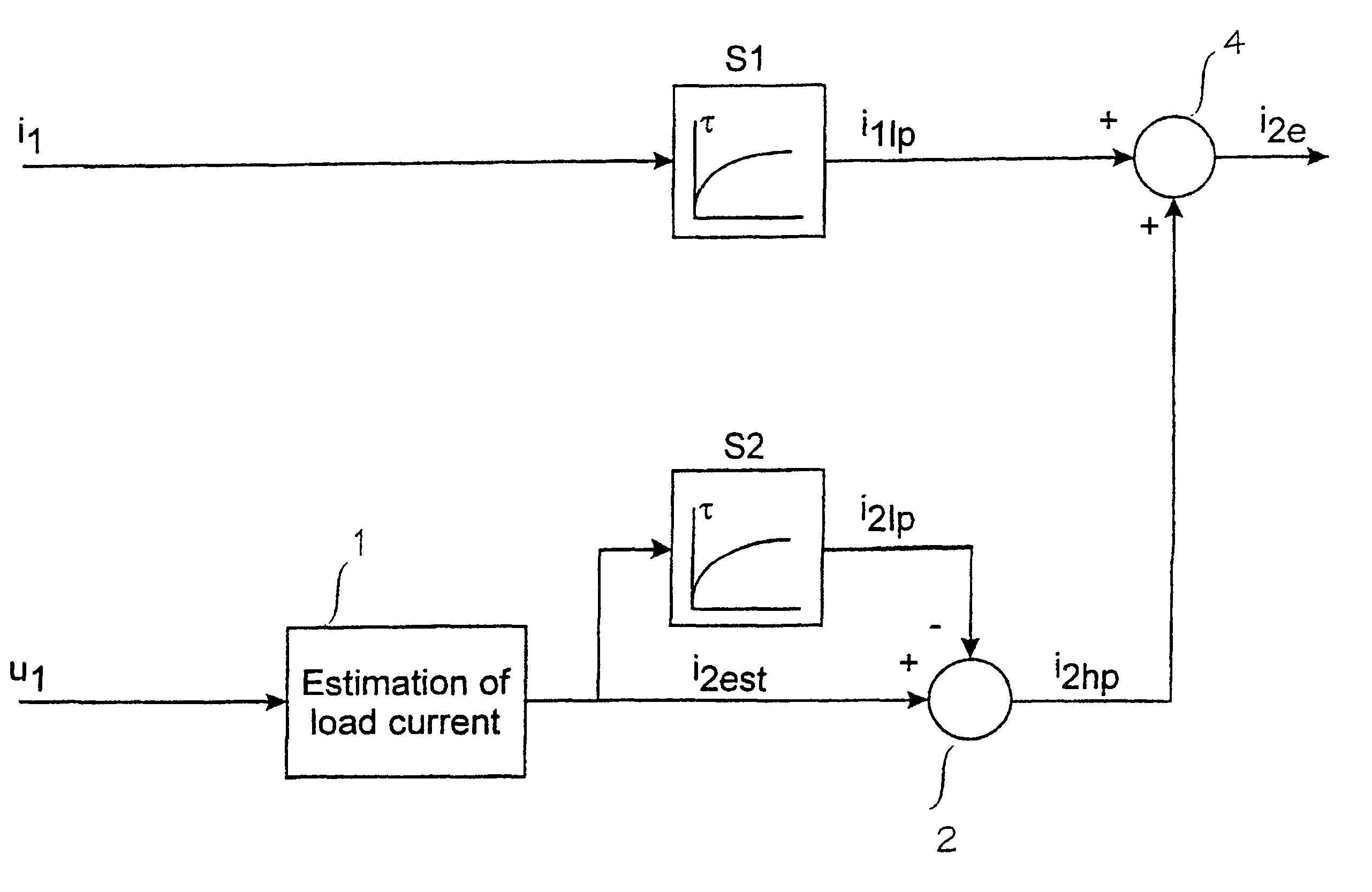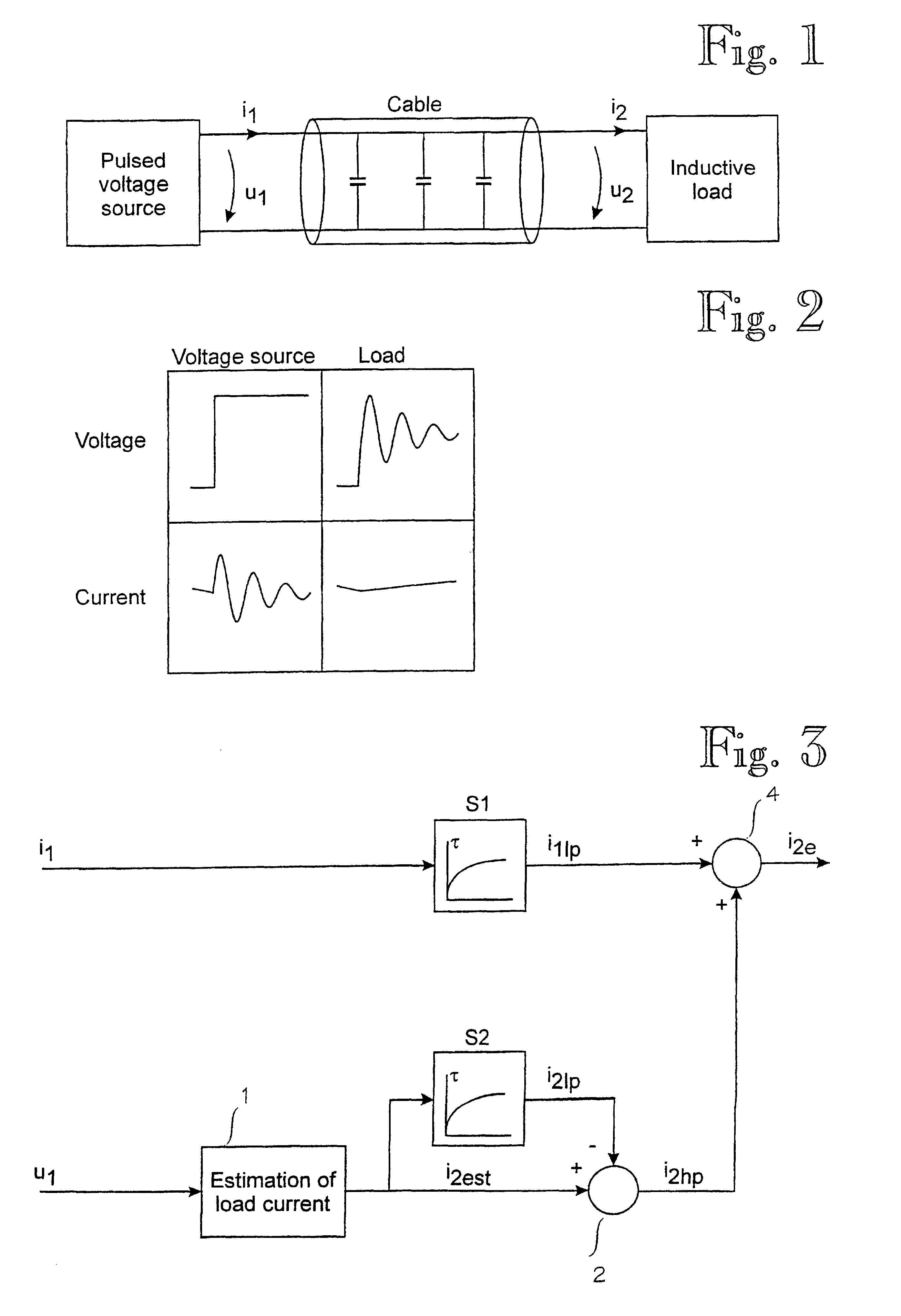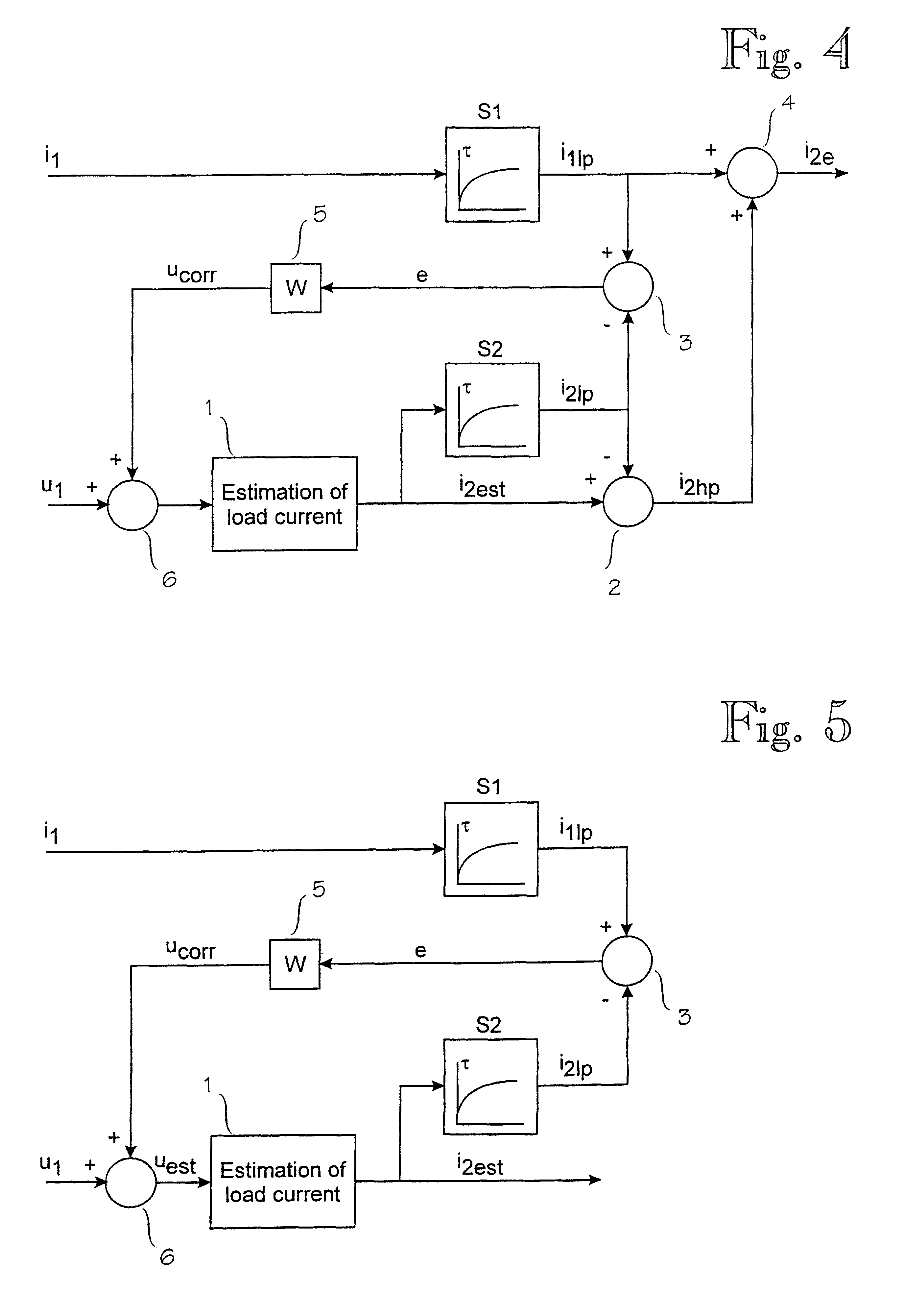Method for defining instantaneous value of current of pulse-controlled inductive load
- Summary
- Abstract
- Description
- Claims
- Application Information
AI Technical Summary
Benefits of technology
Problems solved by technology
Method used
Image
Examples
Embodiment Construction
When an inductive load is supplied via a supply cable using a pulsed voltage source as shown in FIG. 1, the output voltage u1 of the pulsed voltage source produces a voltage wave flowing along the cable. The wave is seen as voltage u2 at that end of the cable which is close to the load. The general curves of voltages u1 and u2 are shown in FIG. 2. FIG. 2 also shows the general curves of current i1 of the voltage source and of load current i2.
As shown in FIG. 2, the currents of the voltage source and the load may differ considerably at a given instant. During the switching, part of the current flows via the cable or via other partly capacitive components, which appears as oscillation of the type shown in FIG. 2 in the current measured in the voltage source. Because of the oscillation of the current, any estimates on the instantaneous value of the load current formed on the basis of the output current of the voltage source may be erroneous, and it is then difficult to set the load cur...
PUM
 Login to View More
Login to View More Abstract
Description
Claims
Application Information
 Login to View More
Login to View More - R&D
- Intellectual Property
- Life Sciences
- Materials
- Tech Scout
- Unparalleled Data Quality
- Higher Quality Content
- 60% Fewer Hallucinations
Browse by: Latest US Patents, China's latest patents, Technical Efficacy Thesaurus, Application Domain, Technology Topic, Popular Technical Reports.
© 2025 PatSnap. All rights reserved.Legal|Privacy policy|Modern Slavery Act Transparency Statement|Sitemap|About US| Contact US: help@patsnap.com



